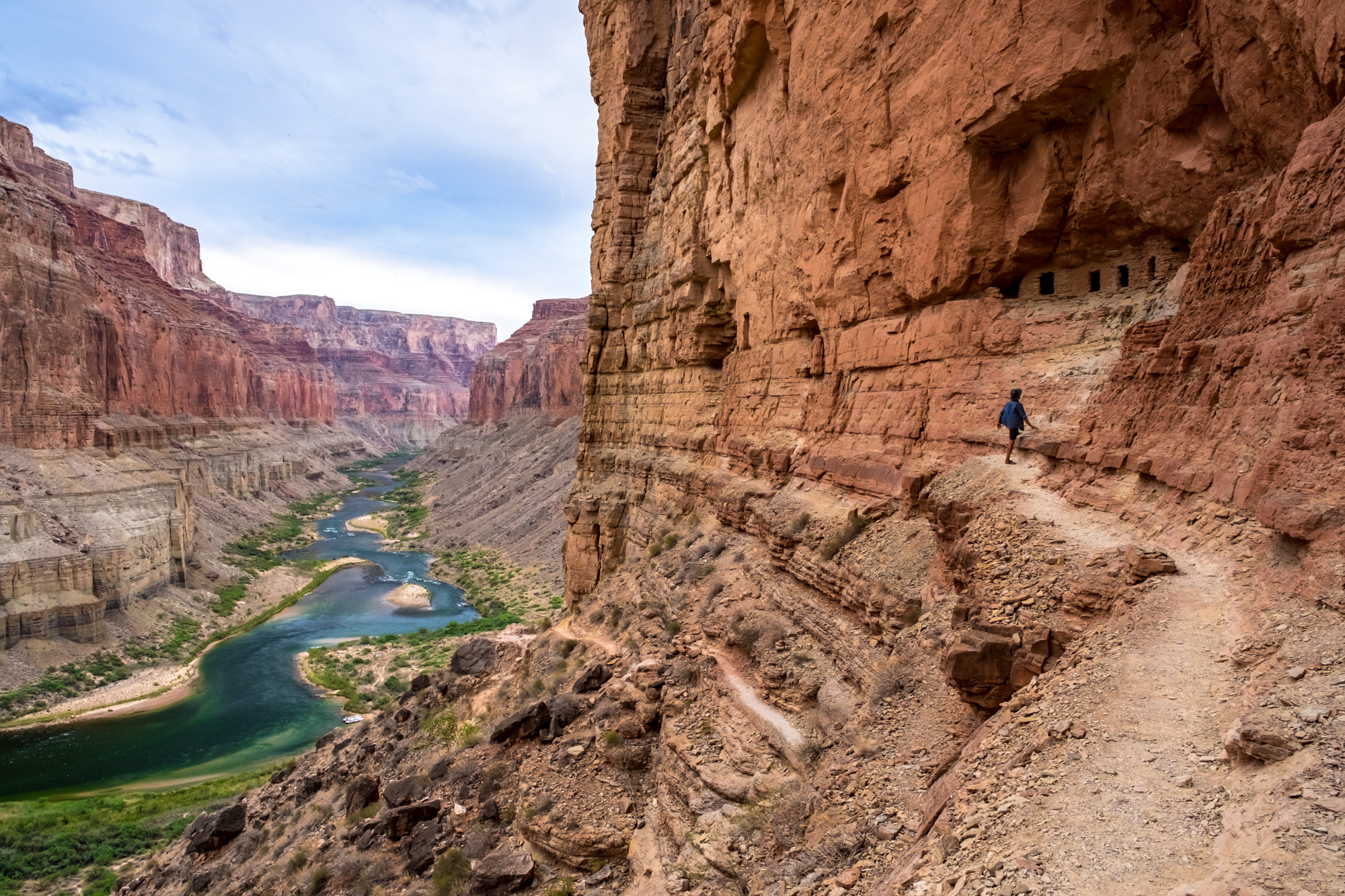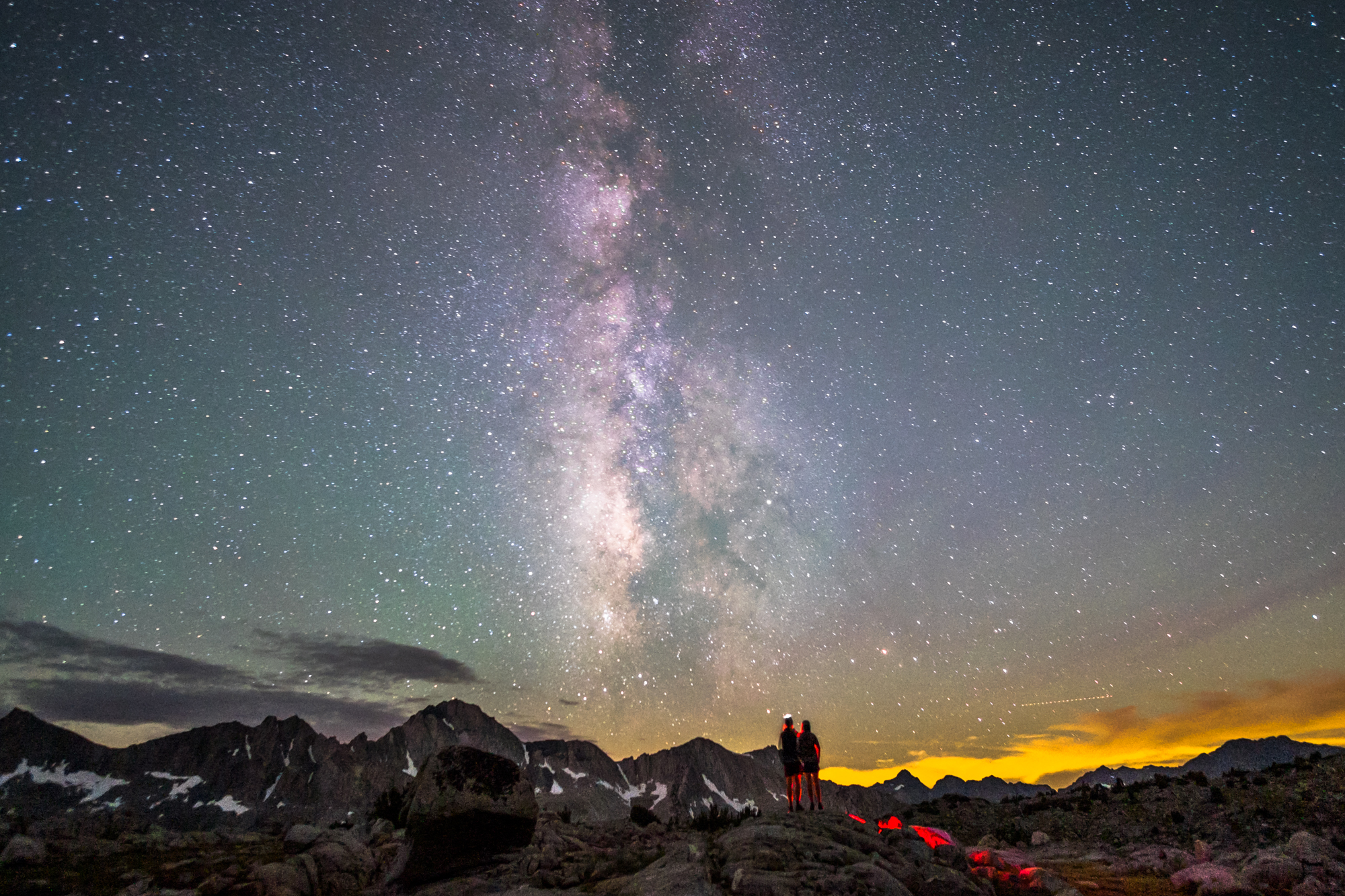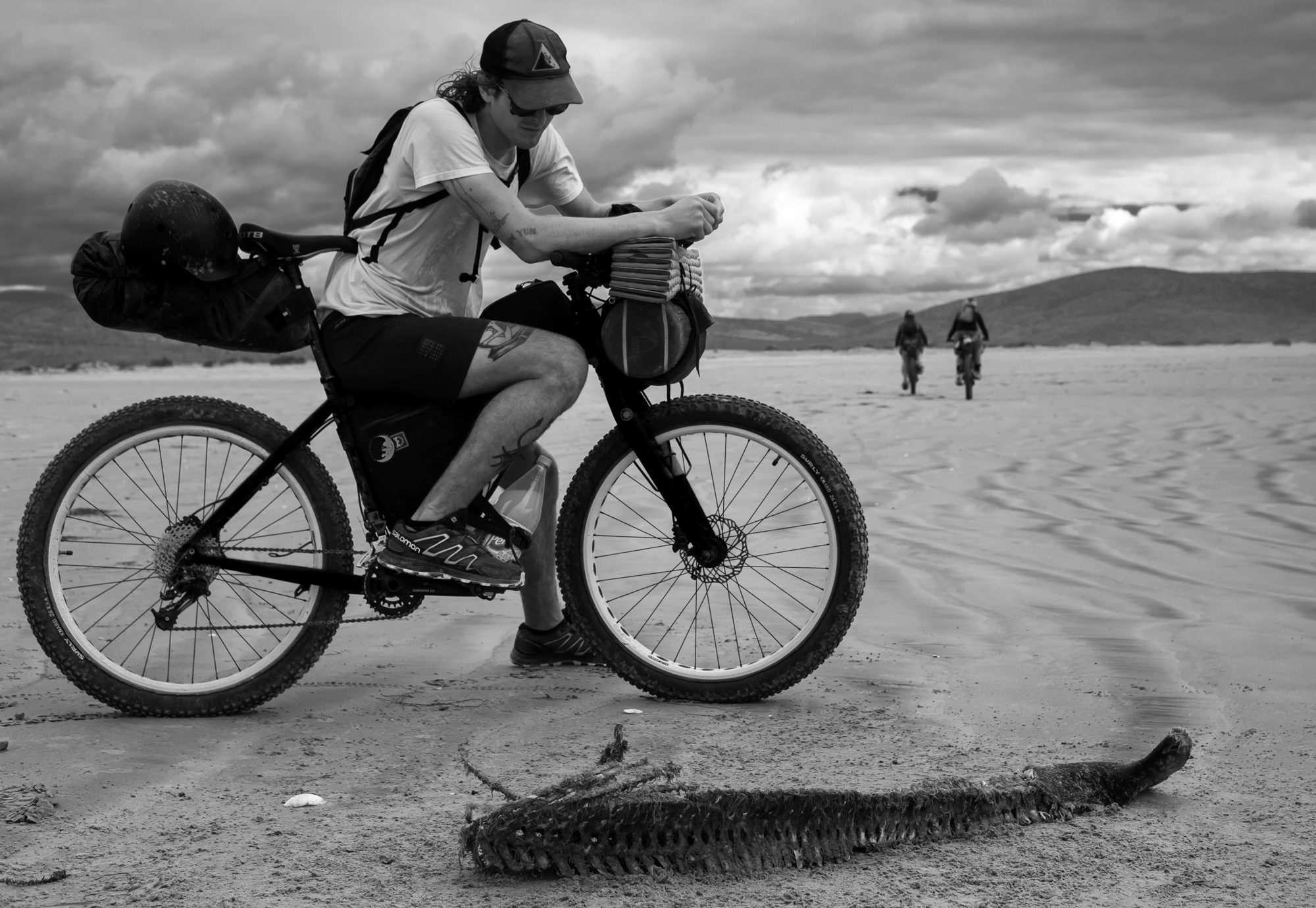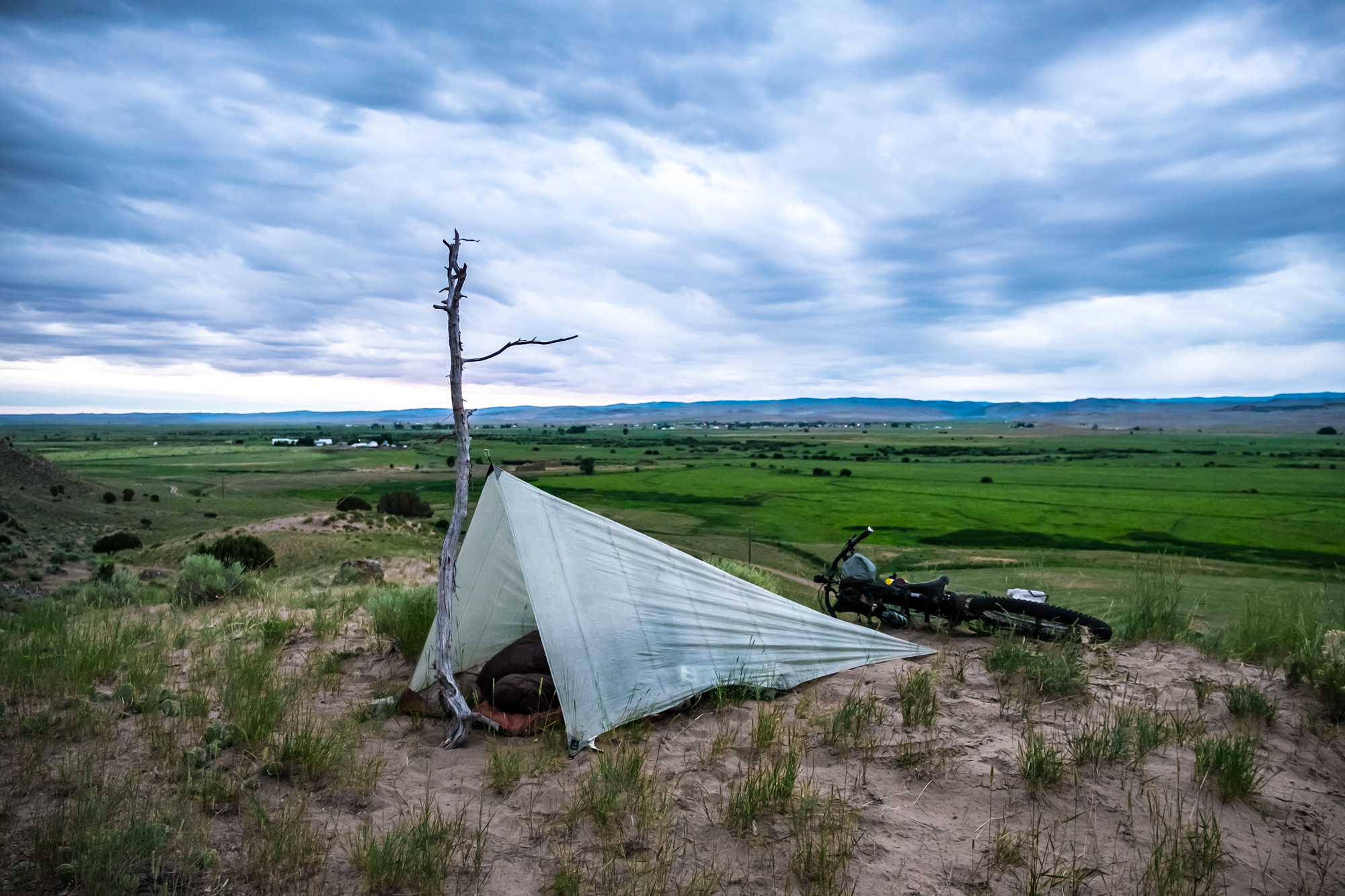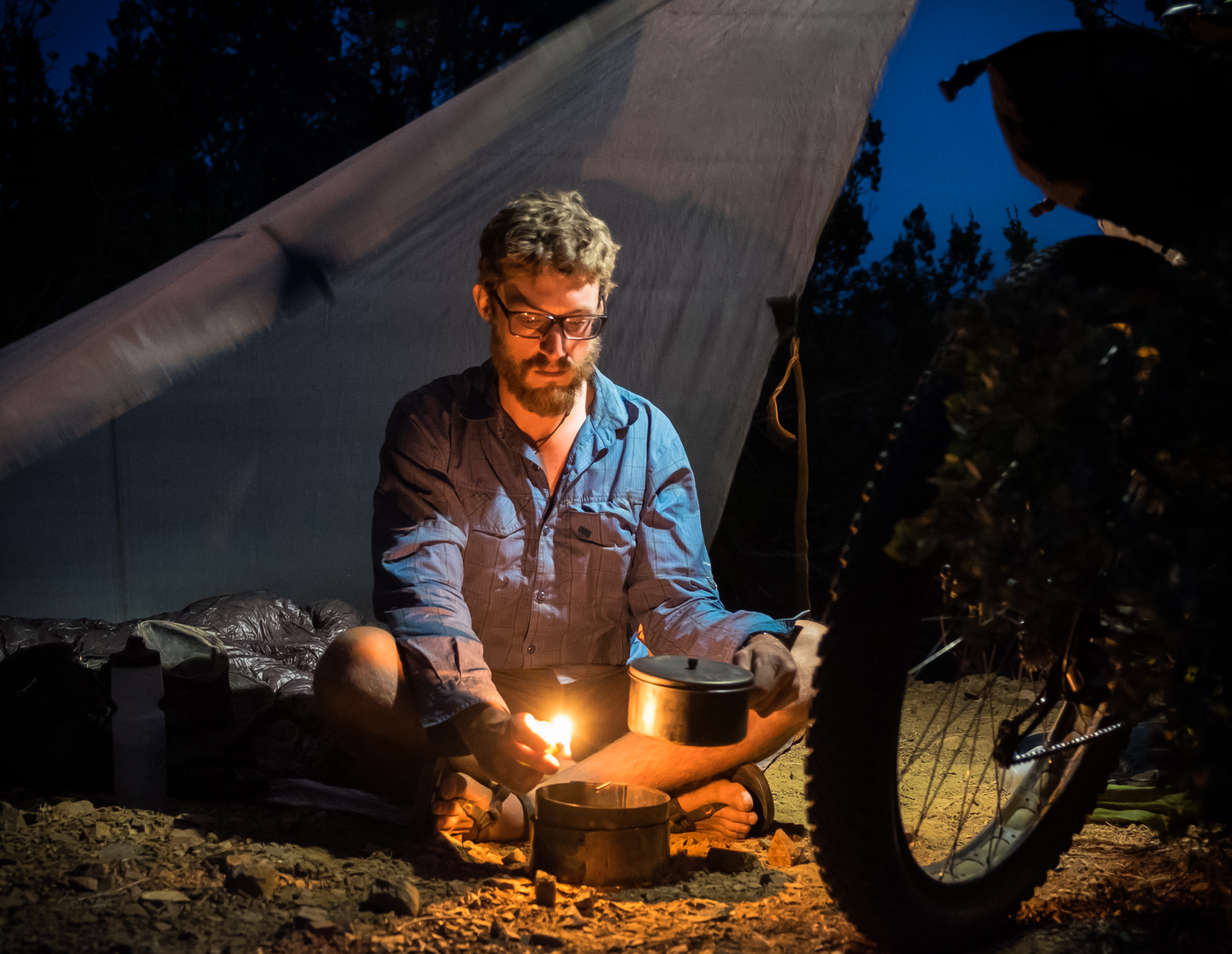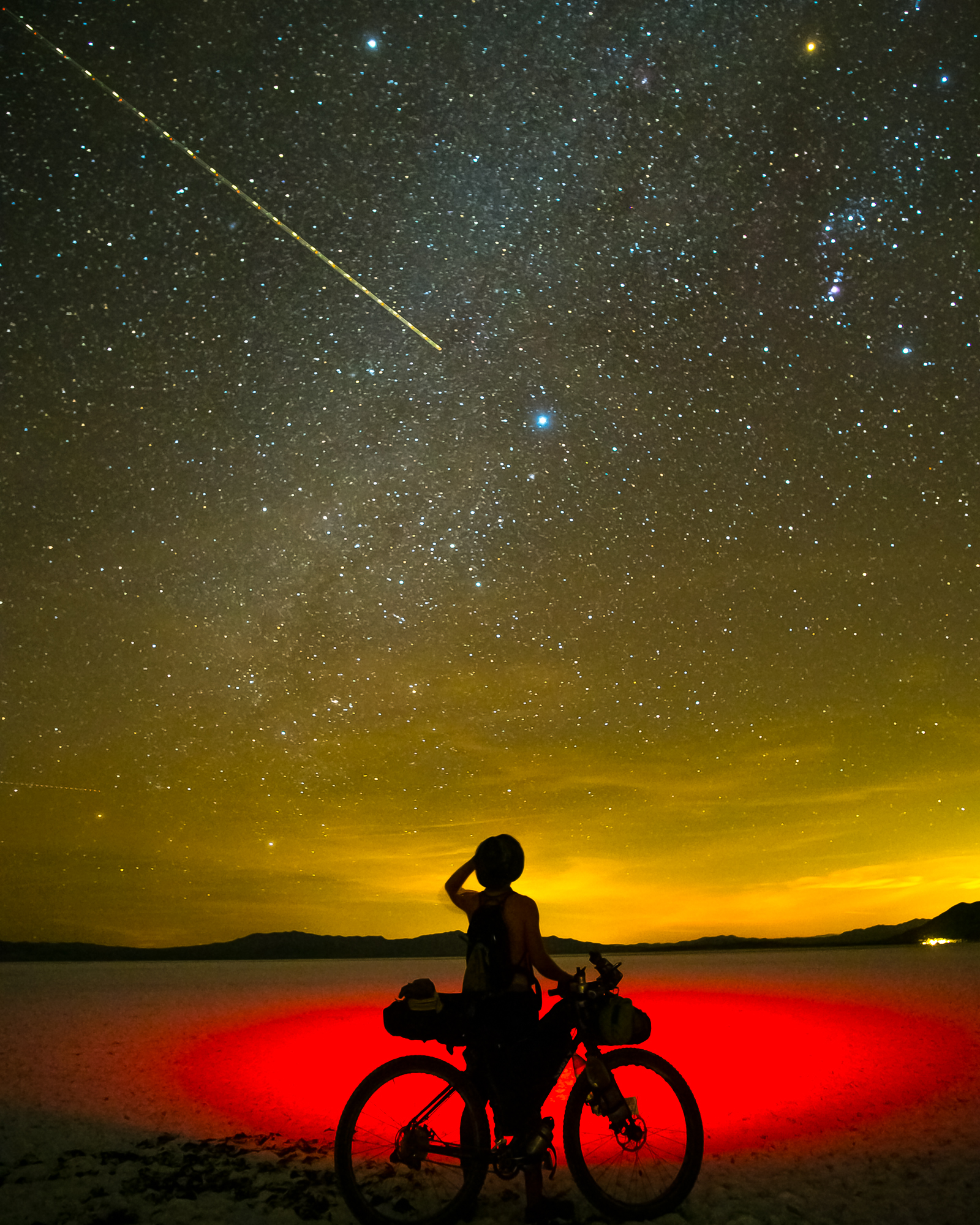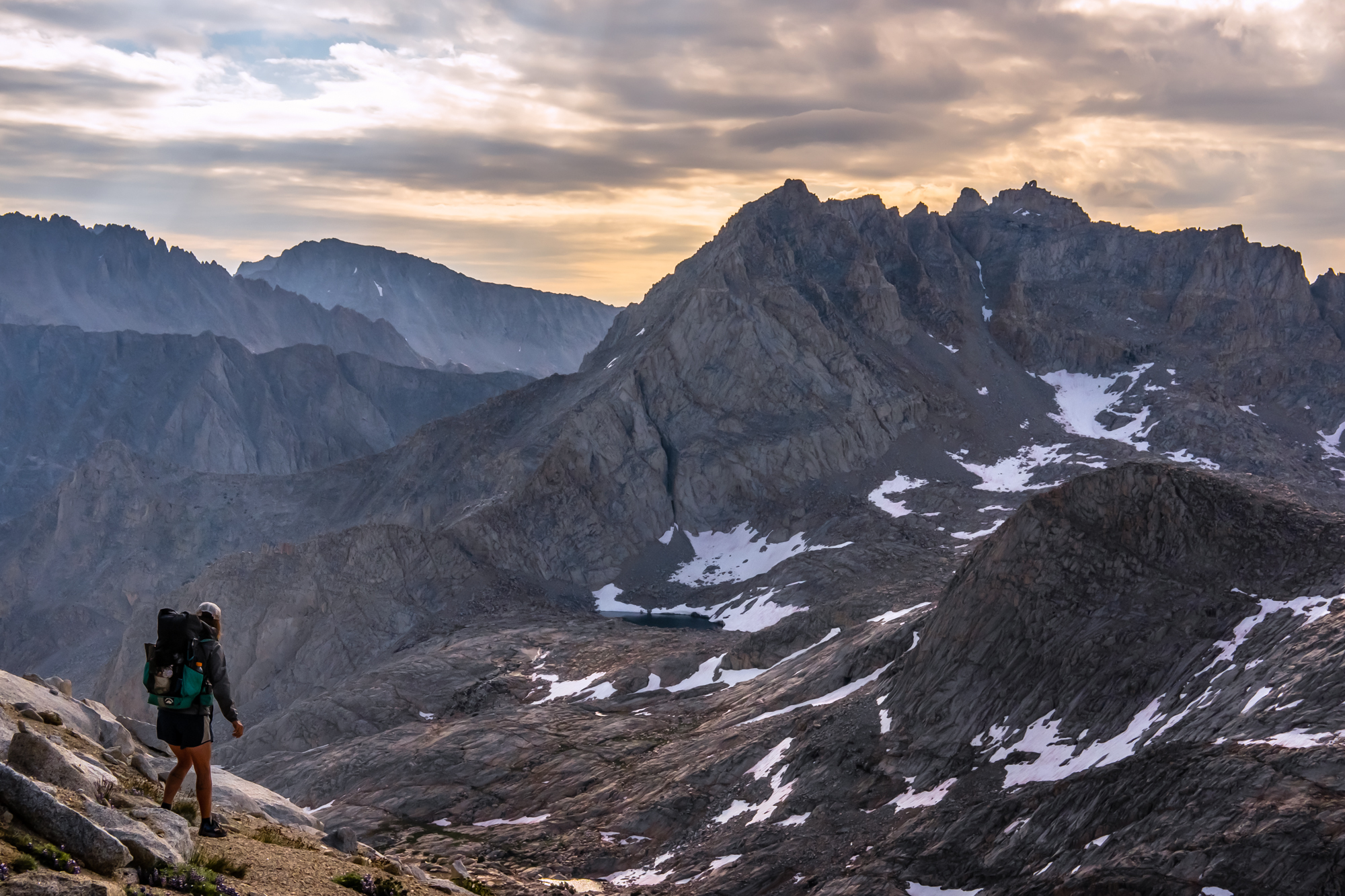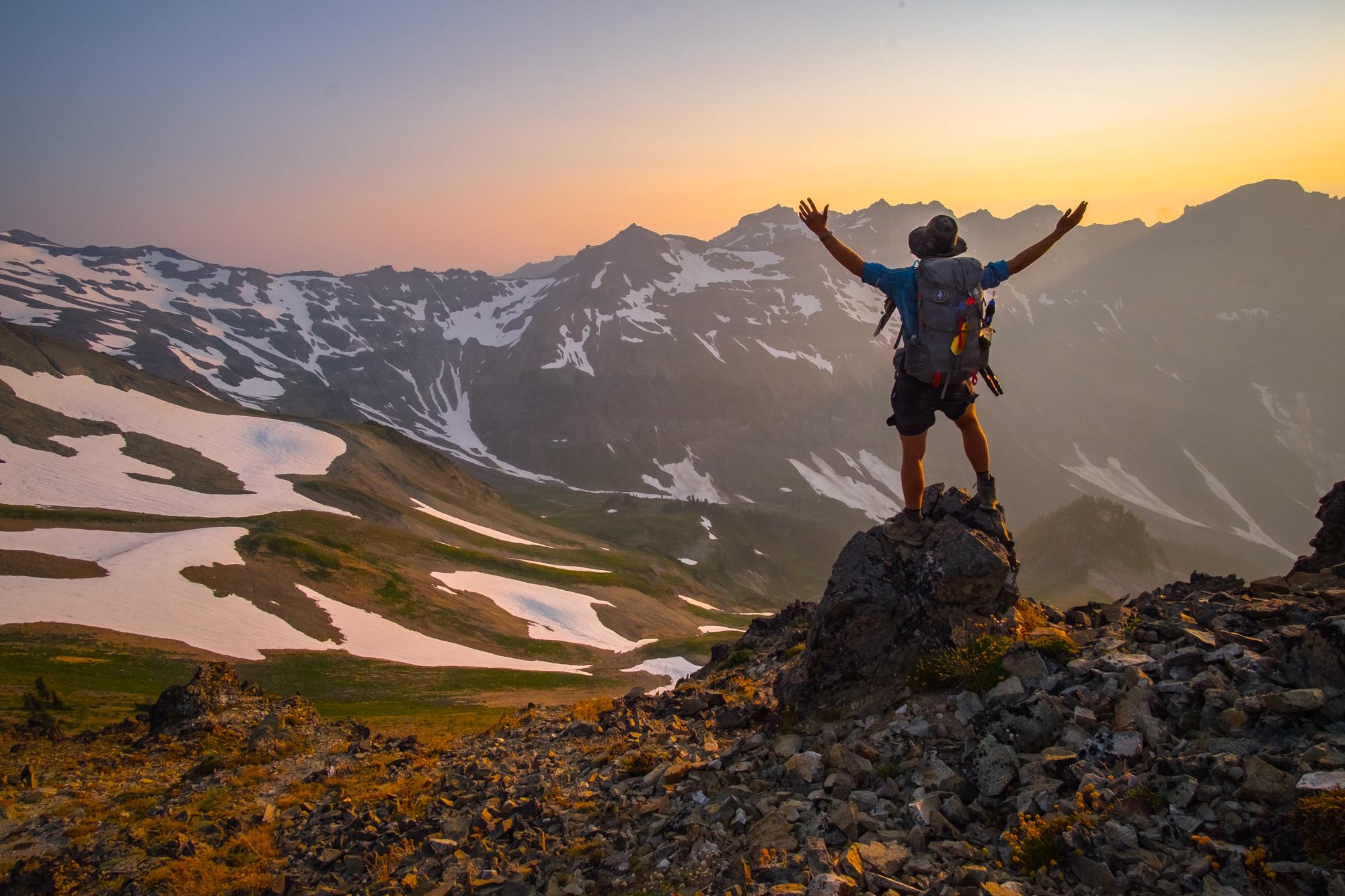Photographers debate endlessly things like sensor size and focal length, zoom vs primes, whether to carry a tripod. For most of us, the answer depends on what we prioritize. This is especially true for adventure photography where weight is paramount. Carry too little and you might not get the shot. Carry too much and you risk injury or you won’t have the energy to use what you’ve carried. Right now, though, I’m not thinking about any of this.
My camera is on a tripod pointing towards the North Rim of the Grand Canyon. It’s framing just enough of the trail to capture the absurdity of my situation: hiking Rim-to-rim with food, camping gear, and a bicycle — 50kgs — strapped to my back. It hurts like hell, hobbling away from the camera. Up is difficult, almost impossibly so, but down is another level of pain entirely. I regain my composure just as the self-timer finishes ticking down. Click. I hobble back slipping the camera into my bag. Then, I grab the tripod to use as a trekking pole. The slight down is torture. The climb up the North Rim is all out war. With every ounce of strength and determination I possess, I reach the top where I re-assemble my bicycle and resume the dirt-road ride from Mexico to Canada (after three days for recovery, of course. It was that long before I could walk again).
Adventure, for me, is inseparable from photography. I purchased my first camera in 2012, a Canon point-and-shoot, to carry on a cycle tour from Pittsburgh, Pa to Bar Harbor, Maine. I bought my first “real” camera the following year, a Fuji x100, for another bike tour from Canada to El Salvador. Desperately craving another focal length, I picked up an X-Pro1 and two primes for a thruhike of the Appalachian Trail. For the Baja Divide Bikepacking Route, I added a tripod to better capture the stars. A new body and my first telephoto, the Fujinon 55-200mm, would round out my kit for a section hike of the Pacific Crest Trail. Then, I swapped my trusty 35mm f2 prime for a zoom and left the telephoto at home. I was out to ride across the country with a canyon in my way.
On adventures like these, I find the crop-sensor X Series Cameras to be the perfect balance between image quality and weight as well as cost. As for the zoom/prime conundrum, I much prefer primes for the way they make me think and move. I appreciate the way they balance on camera bodies and I love how little and light they are; being inconspicuous is a huge advantage as well when you’re all alone on a bike in place like Mexico. But, I hate to say it, I’m a convert and traitor. Zooms are just so much easier in the backcountry. When your clinging to a rock face with one hand and shooting your partner with the other, it’s so much easier to just twist a barrel. Plus, in these situations, you can’t zoom with your feet. You’d fall off a mountain! Besides, they say the Fuji 16-55mm is a barrel of primes anyway. Can’t say I disagree.
My current and ideal kit comprises an X-H1 (which will be this year’s purchase before the next adventure; IBIS for better video) with three lenses and a tripod. The 12mm f2 Rokinon is perfect for astrophotography but also those crazy wide perspectives. The 16-55mm f2.8 lives on my camera most of the time. Being weather sealed, it pairs perfectly with the body and these focal lengths cover most of my shooting. I carry the 55-200mm for compression in the mountains and all that reach. Maybe one day I’ll switch to the 50-140mm f2.8 for image perfection and buttery backgrounds. But, for now, the much smaller and lighter tele zoom fits my needs very well.
As for carrying all this, it’s really hard to say. There is no perfect way to carry a camera in these situations. I’ve used a Mindshift Ultralight Camera Cover for years with their Switch Lens Case on the belt for easy and fast changes. I carried a ziplock split in half to cover the case when it would rain. My X-Pro1 got, too, wet a couple times and quit working. In Virginia on the Appalachian Trail, it rained every day for three weeks straight. Once, in Pennsylvania, my camera case filled with sweat on a particularly hot day which soaked my camera; gross, I know. After some time in the sun, it has worked like new every time. Then, they’ve been subject to thousands of miles in the dusty, sandy west… This is another advantage to these cameras. They are more durable than you’d believe.
On the last adventure, I changed things up. I attached a holster case to the handlebar of my bike to carry the X-T1 with 16-55mm. It worked well enough providing fast and easy access to the camera. But, all the rattling from dirt roads took a bit of a toll. The lens mount seems just a touch looser — though there has been no loss in image quality. Some paint has also worn away. Mostly, I missed having it attached to me. For the next trip, I think I’ll try a sling/waist pack. I have a friend who swears by the Think Tank Turnstyle. I also know many who love the Peak Designs Capture Clip though it has never appealed to me, personally, as it mandates a backpack. Please, if you have any suggestions, I’d love to hear ‘em! To see where my camera ends up next, find me on Instagram: @ryankodakbrown.



